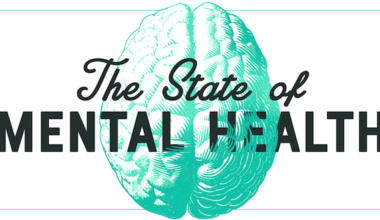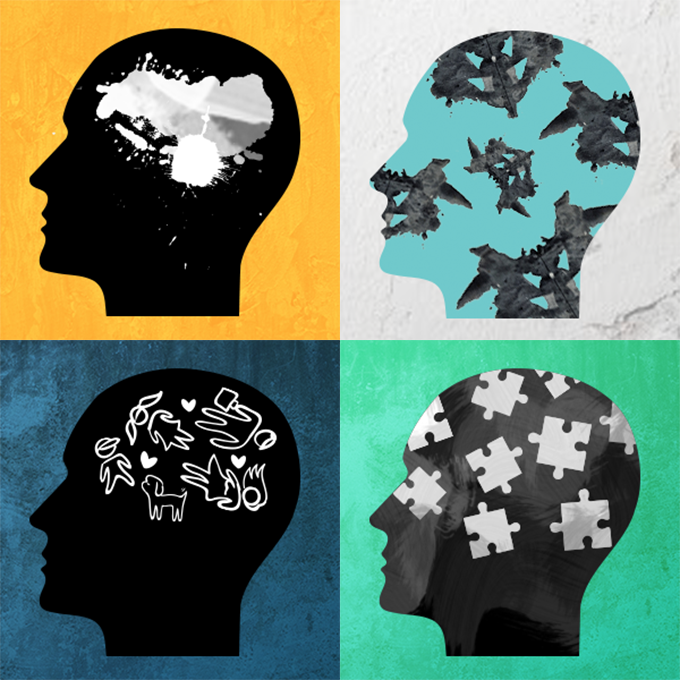Updated on 3/9/2023
Dialectical behavior therapy (DBT) is a type of psychotherapy (talk therapy). More specifically, it’s an evidence-based form of the widely-used cognitive behavior therapy (CBT). DBT is used in individual therapy, group therapy, and in the growing-in-popularity internet-based online dialectical behavior therapy or phone therapy. Actually, it’s almost always used in combination of all three of these forms.
Dialectical behavioral therapy is different from what most people think of when “therapy” comes to mind, and there are various dialectical behavior therapy techniques that are used during treatment. At its core, DBT can be very effective in treating people who experience deeply intense, extreme emotions. Research suggests that DBT for borderline personality disorder, DBT for PTSD, and DBT for other disorders is hugely successful. In fact, one study even shows that 77% of DBT patients no longer met the criteria for a borderline personality disorder (BPD) diagnosis after one year of DBT treatment.
Dialectical behavioral therapy techniques were designed to help people with severe emotions, such as those who live with borderline personality disorder (BPD), bipolar disorder, or post-traumatic stress disorder (PTSD). DBT techniques include:
Dialectical Behavioral Therapy Online
Your DPT therapist will help you develop the tools to manage your emotions in difficult situations
- Learning to use mindfulness
- Learning about interpersonal effectiveness
- Learning to manage and tolerate stress
- Learning to regulate emotions
When you apply these DBT techniques, you’ll learn to first identify, then change negative behaviors that cause you pain, discomfort, or an inability to function in relationships and your daily life.
Keep reading to learn more about DBT, including the basic components, techniques that are used, if you can do it on your own, and how you can find a therapist who’s trained in DBT therapy techniques.
Core Components of DBT
The principles of dialectical behavior therapy techniques are built on a few fundamental ideals. First, it was developed on the foundations of both science and philosophy. The first two core beliefs of DBT are “I am doing the best that I can” and “I need to learn new ways to do better and try harder.” Finally, a major thought in DBT is that everything in life is connected. The only stable, constant thing we can trust or rely on is that change is unavoidable.
“The 4 components of DBT are individual sessions, group therapy, phone coaching, and a consultation team. This multidimensional approach serves as a way to support individuals who are going through DBT treatment. Each part serves an important purpose and provides structure for the client.”
There are four basic components of DBT. They include:
1. Using individual one-on-one therapy
Typically, DBT therapy sessions will include one individual session per week with a trained therapist. During your sessions, you’ll focus on major issues in your life. You’ll work to explore how your beliefs, your thoughts, and the expectations you have of your world might add to difficulties you’re having in specific areas of your life.
You’ll learn how to find new ways to handle things, and you’ll practice DBT skills that’ll help you create a reality and world that’s something you can function in successfully. You’ll remain in individual therapy during the entire DBT process.
2. Therapist training must be a priority
There’s a strong emphasis on the training DBT therapists must undergo. Additionally, they’re required to stay up to date with the most current findings in regards to DBT, while also being sure to keep up with recent research, studies, and all other mental health treatment aspects. Therefore, it’s important to know how to find a good therapist that suits your needs.
3. Help must always be available
DBT, when used traditionally, offers you access to a coach via phone should you need to contact someone in between your therapy sessions. This person doesn’t necessarily need to be your therapist, but it could be. It might also be another DBT-trained therapist or a trained phone coach.
Phone use is encouraged, but it’s not intended to be something that’s abused. The calls shouldn’t become habitual. You can’t continuously reach out to go over things that you’re working on in therapy without trying to put your new DBT skills into practice on your own. If you begin to use the calls as a crutch, they will be addressed in your regular therapy sessions.
4. Group therapy is a must
Unlike most other cognitive behavioral therapy techniques, where you’d normally go to either group or individual therapy, with DBT, you’ll attend both formats. Group therapy for DBT involves lectures, discussions, and the opportunity to practice and implement techniques you’re learning. Group sessions will often take place once a week over the course of about 5 months. It’s important to attend every session to get the most out of the format and enjoy all the advantages of group therapy.
What Techniques Are Used in DBT?
There are specific techniques used that differentiate DBT from other types of therapy. While there are numerous techniques that can be used, a few are more common than others. The four main components that make up DBT are distress tolerance, interpersonal effectiveness, mindfulness, and emotional regulation.
1. Learning to use mindfulness
The art of mindfulness can be useful in so many aspects of life. Focusing on a core mindfulness skill as a dialectical behavioral therapy technique can help you learn to be fully present in the moment. This DBT skill helps you not live in the past or the future. Mindfulness is largely considered to be the foundation of DBT. When practicing mindfulness, you’ll learn to:
- Non-judgmentally identify and observe your thoughts, feelings, emotions, and surroundings
- Describe your situation in a way that is easy for others (and yourself) to understand
- Effectively participate in value-based and goal-directed behaviors
2. Learning about interpersonal effectiveness
Interpersonal effectiveness follows core mindfulness. It focuses on how you’ll positively interact with the people in your life. You’ll learn how to navigate both stressful challenges you might face, as well as how to deal with your personal relationships. You’ll focus on:
- Communicating clearly
- Letting go of animosity
- Learning to say no
- Focusing on how to ask for what you need without feeling a loss of self-respect
3. Learning to manage and tolerate stress
When you learn distress tolerance, you’re practicing the art of accepting change (radical acceptance). There are a few techniques to focus on that can teach you how to better manage and deal with any crisis you face in your life. These can include:
- Focusing on how to improve stressful situations
- Learning to self soothe
- Identifying ways to distract yourself
- Figuring out what the pros and cons of a situation are
4. Learning to regulate emotions
Emotion regulation is typically the last DBT skill that’s taught in DBT therapy sessions. Emotion reguation might be considered one of the most important DBT skills training in the process. Learning how to manage and control your emotions, especially if you’re a fiercely intense person, can be incredibly difficult, but you can do it. If you find that you’re often overwhelmed, angry, depressed, anxiety-ridden, or frustrated, learning emotional regulation can improve your ability to:
- Feel less vulnerable
- Regulate any intense emotion before it takes hold of you
- Become confident in your ability to control how you feel
Can I Do DBT On My Own?
Though some types of therapy can be effectively used on your own, DBT therapy techniques can be difficult to learn and implement without the guidance of a trained therapist. Particularly because of the combined group and individual therapy components, you won’t get as much out of the technique if you try to use DBT by yourself.
To see the most reward out of the effort you put into your sessions, you should find a DBT-trained therapist to work with.
“DBT is usually best learned by going to a trained professional who can teach the techniques and explain the concepts behind strategies. It can be confusing for individuals who try to do it on their own. A DBT trained professional can also provide support and feedback that can help the individual implement these skills into their daily lives.”
Finding a DBT Therapist
The good news about DBT is that because it’s a type of cognitive behavioral therapy, it’s not uncommon for therapists to be trained in it. If you’re interested in exploring DBT as a type of cognitive behavior therapy, it’s best to find a DBT therapist who specializes in it. You can start by asking your primary care doctor, or if you’re currently in therapy and your therapist doesn’t use DBT, you could ask for a referral.
Talkspace’s online therapy platform makes getting therapy easy, convenient, and affordable. Therapists are accredited and licensed, and many are trained in DBT therapy techniques. Sometimes, the hardest step is the first one, but once you start your online dialectical behavior therapy journey, you can begin a course of treatment that’ll benefit you in ways you couldn’t have imagined.
Sources:
1. Stiglmayr C, Stecher-Mohr J, Wagner T et al. Effectiveness of dialectic behavioral therapy in routine outpatient care: the Berlin Borderline Study. Borderline Personal Disord Emot Dysregul. 2014;1(1):20. doi:10.1186/2051-6673-1-20. https://www.ncbi.nlm.nih.gov/pmc/articles/PMC4579507/. Accessed March 28, 2022.
2. Linehan M, Comtois K, Murray A et al. Two-Year Randomized Controlled Trial and Follow-up of Dialectical Behavior Therapy vs Therapy by Experts for Suicidal Behaviors and Borderline Personality Disorder. Arch Gen Psychiatry. 2006;63(7):757. doi:10.1001/archpsyc.63.7.757. https://jamanetwork.com/journals/jamapsychiatry/fullarticle/209726. Accessed March 28, 2022.
Talkspace articles are written by experienced mental health-wellness contributors; they are grounded in scientific research and evidence-based practices. Articles are extensively reviewed by our team of clinical experts (therapists and psychiatrists of various specialties) to ensure content is accurate and on par with current industry standards.
Our goal at Talkspace is to provide the most up-to-date, valuable, and objective information on mental health-related topics in order to help readers make informed decisions.
Articles contain trusted third-party sources that are either directly linked to in the text or listed at the bottom to take readers directly to the source.




